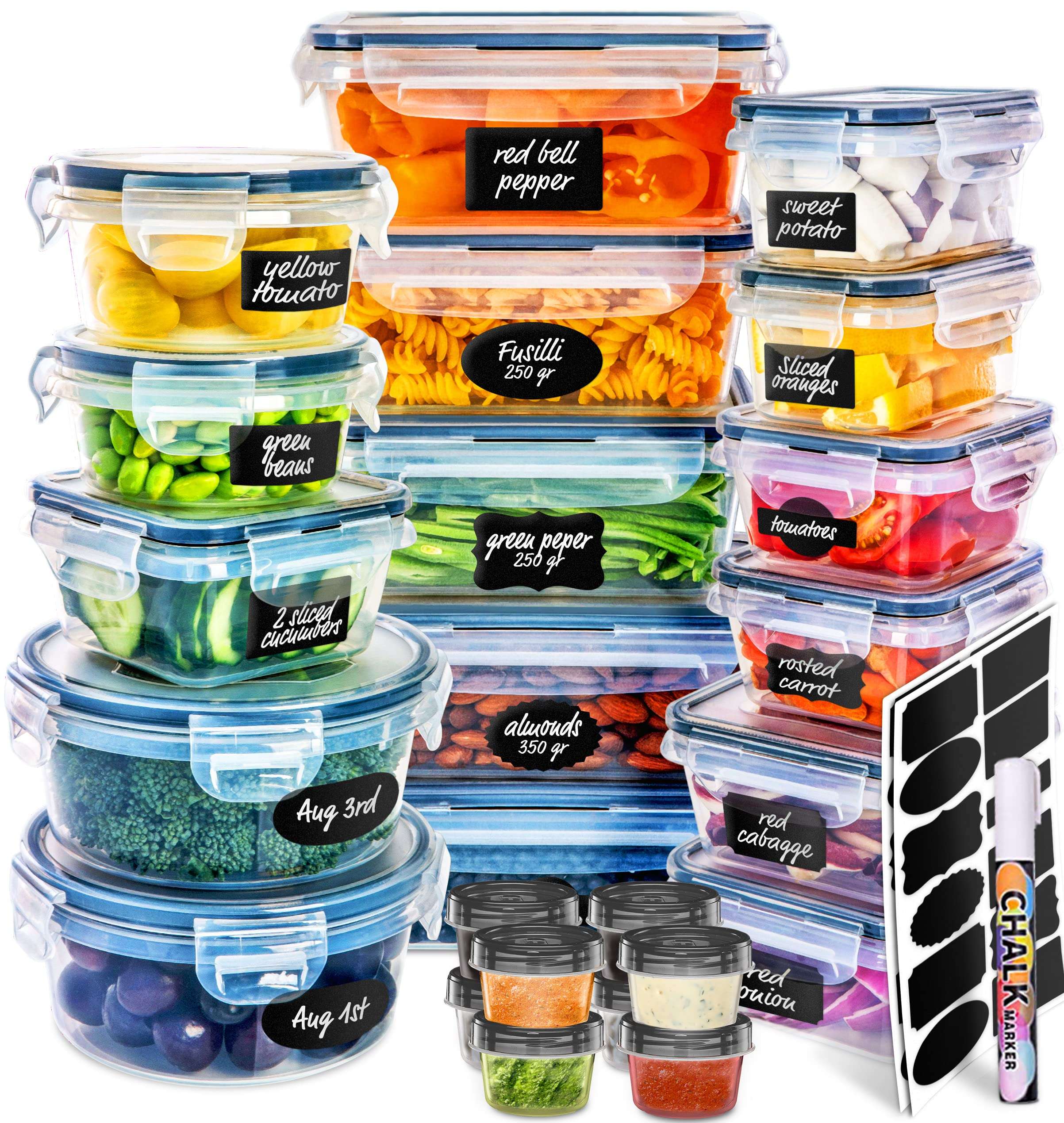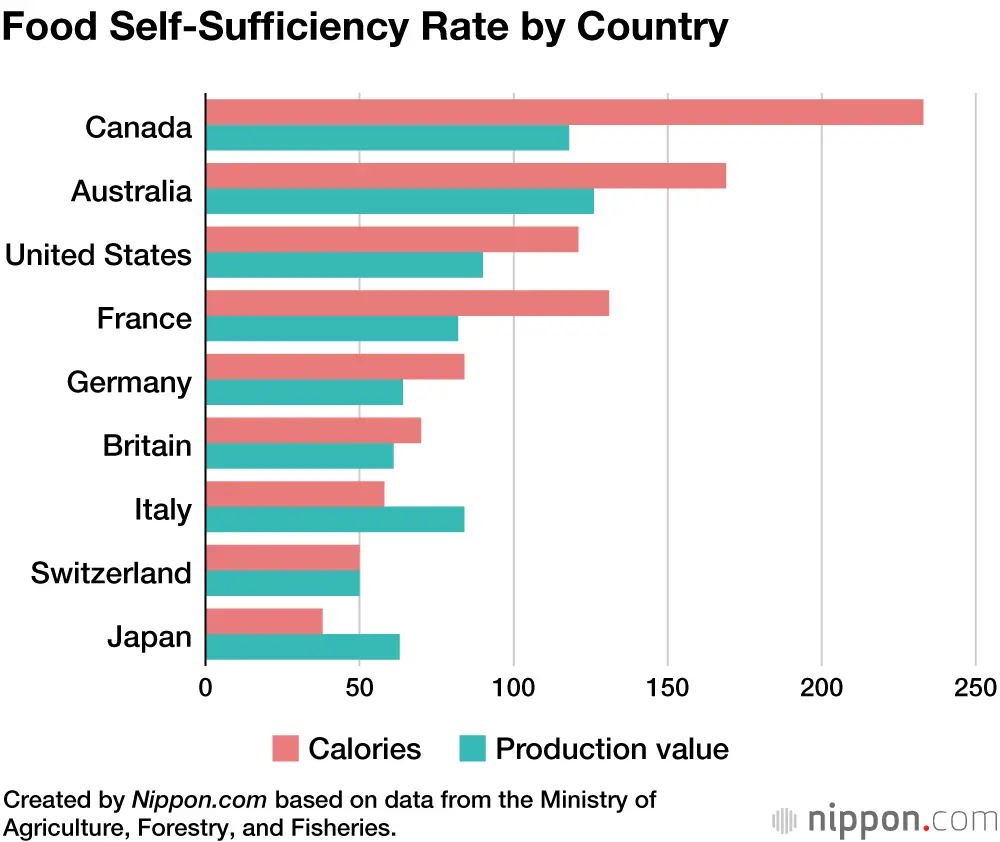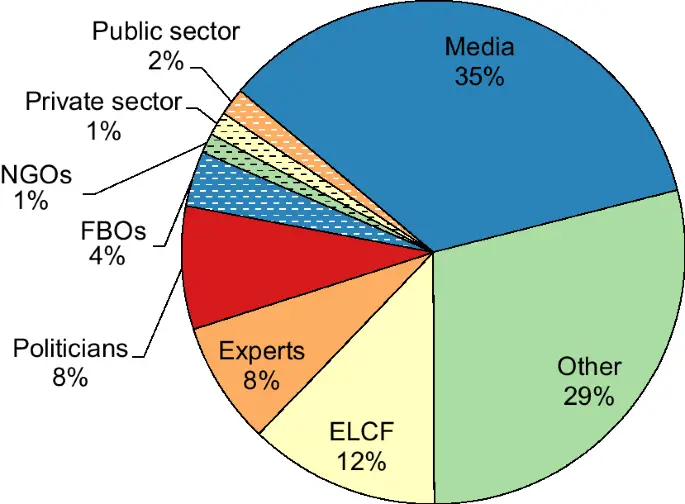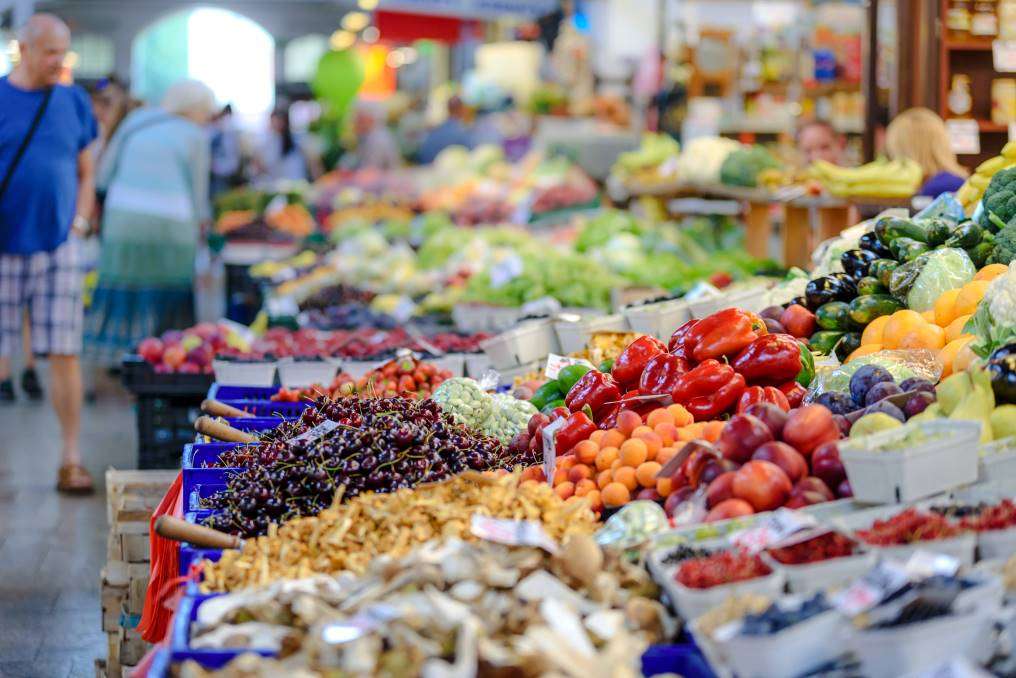In this article, you will learn some useful tips for safely storing food in a tent while camping or living off the grid. We will explore different methods and strategies to help you keep your food fresh and protected from animals and other potential hazards. Whether you are planning a camping trip or considering a more sustainable lifestyle, these tips will ensure that your food stays safe and delicious during your outdoor adventures.
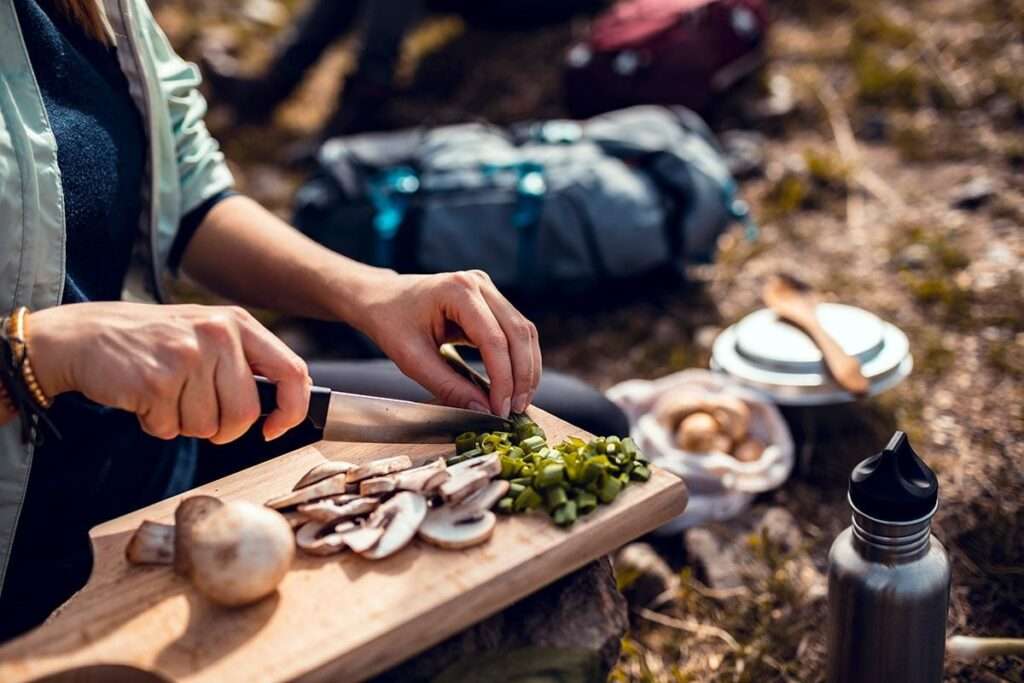
Tips for Storing Food Safely in a Tent
Camping can be a delightful and memorable experience, especially when it comes to enjoying delicious meals around the campfire. However, it is crucial to ensure that the food you bring along stays fresh and safe for consumption throughout your camping trip. Storing food properly in a tent is essential to prevent spoilage, contamination, and attracting unwanted pests. In this article, we will provide you with a comprehensive guide on how to store food safely in a tent, ensuring a pleasant and worry-free camping experience.
Consider the material of the containers
The first step in storing food safely in a tent is to choose the right containers. Opting for high-quality food storage containers is crucial to maintain the freshness and integrity of your food. When selecting containers for food storage, consider the material they are made of. Materials such as durable plastic, glass, or stainless steel are excellent choices as they are resistant to breakage and do not absorb odors or flavors from the stored food.
Opt for airtight and waterproof containers
To prevent air, moisture, and insects from infiltrating your food supply, it is essential to invest in airtight and waterproof containers. These containers provide a reliable barrier against external elements, keeping your food fresh and safe for an extended period. Airtight containers also help to preserve the flavors and aromas of your food, ensuring maximum enjoyment during your camping meals.
Select containers that are easy to pack and carry
When choosing containers for food storage, consider their portability and ease of packing. Look for containers that are lightweight, stackable, and compact, as they will take up less space in your camping backpack or cooler. Additionally, opt for containers with secure lids or locking mechanisms to prevent spills and leaks during transportation.
Properly Cleaning and Preparing the Containers
Before storing food in your containers, it is essential to clean and prepare them properly. Proper cleaning helps to eliminate any bacteria or contaminants that may be present, ensuring the safety of your stored food.
Wash the containers with hot soapy water
Start the cleaning process by washing your containers with hot soapy water. Use a mild dish detergent and a scrub brush or sponge to thoroughly clean both the interior and exterior of the containers. Pay extra attention to any crevices, corners, or seals where food particles may get trapped.
Rinse the containers thoroughly
After washing the containers, rinse them thoroughly with clean water to remove any soap residue. Ensure that all traces of soap are completely washed away, as soap residue can taint the taste of your food.
Allow the containers to dry completely
After rinsing, allow the containers to air dry completely. Placing them upside down on a dish rack or towel will facilitate faster drying and help to prevent any moisture from being trapped inside the containers.
Sanitize the containers before use
To further ensure the safety of your food, it is advisable to sanitize your containers before storing food in them. You can use a mild bleach solution (1 tablespoon of bleach per gallon of water) or a food-safe sanitizing spray to disinfect the containers. Thoroughly rinse the containers after sanitizing to remove any residual sanitizing agents.
Organizing and Labeling the Stored Food
Proper organization and labeling of your stored food will not only make it easier to find what you need but also help in maintaining food safety.
Categorize the food items
Before storing your food in the containers, categorize the different types of food items. Grouping similar items together will make it easier to locate specific items when needed. For example, separate perishable items like meat, dairy, and vegetables from non-perishable items like canned goods or dry goods. This way, any spoilage or contamination can be contained instead of spreading to the rest of your food supply.
Create a systematic arrangement of the containers
Once you have categorized your food items, create a systematic arrangement of the containers in your tent. Stack and organize the containers in a way that maximizes space while ensuring easy access. By creating a clear and organized system, you can avoid unnecessary rummaging and potential damage to your stored food.
Label each container with its contents and date of storage
Labeling each container with its contents and the date of storage is crucial for maintaining food safety. This step will help you keep track of the freshness and expiration dates of your stored food. Use waterproof markers or adhesive labels to write the necessary information on each container.
Utilizing Cold Storage Options
When camping in warm or hot weather, it is essential to utilize cold storage options to prevent food spoilage and bacterial growth.
Use portable coolers with ice packs
A portable cooler with ice packs is an excellent option for storing perishable items like meat, dairy products, or fresh produce. The ice packs will help maintain a cold temperature inside the cooler, extending the shelf life of your food. When using a cooler, ensure that it is well-insulated and properly sealed to minimize temperature fluctuations.
Consider using dry ice for longer-term storage
If you plan on camping for an extended period, consider using dry ice as an alternative to regular ice packs. Dry ice is extremely cold and can keep your food frozen for longer durations. However, it is crucial to handle dry ice with caution and follow proper safety guidelines when using it.
Maintain a consistent temperature using a camping fridge or freezer
For those who desire convenience, investing in a camping fridge or freezer can be a game-changer. These portable appliances run on electricity or propane and allow you to regulate the temperature inside, ensuring optimal conditions for food storage. This option is particularly suitable for longer camping trips or when you need to store a larger quantity of perishable items.
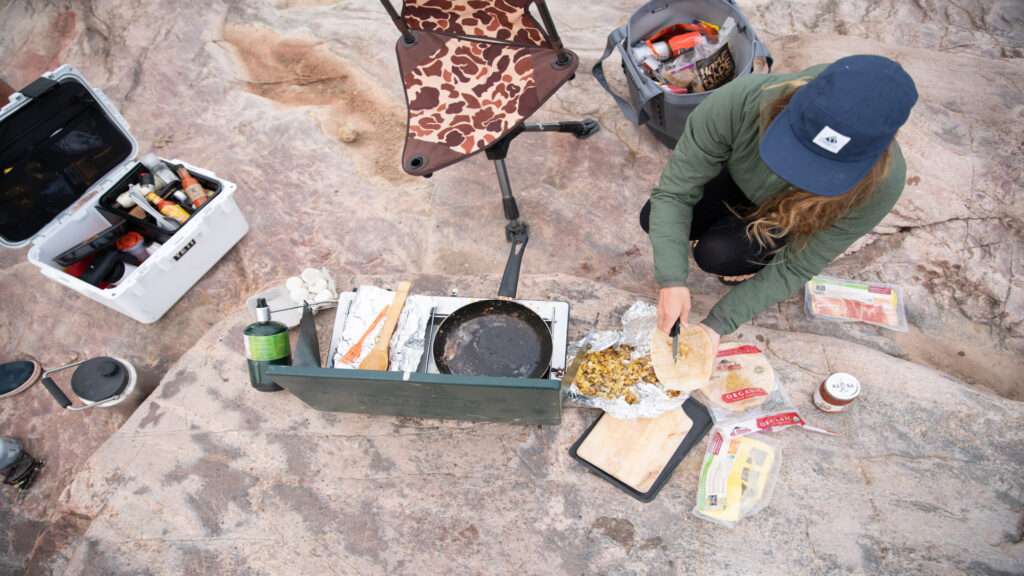
Implementing Correct Food Handling Techniques
Proper food handling is essential to prevent foodborne illnesses and contamination. Follow these guidelines to ensure the safety of your stored food.
Wash your hands thoroughly before handling food
Before touching any food item, always remember to wash your hands thoroughly with soap and clean water. Good hand hygiene is crucial in preventing the spread of harmful bacteria and viruses.
Keep raw and cooked food items separate
To avoid cross-contamination and the risk of foodborne illnesses, always keep raw and cooked food items separate. If possible, use separate containers, cutting boards, and utensils for raw and cooked foods. This practice minimizes the chances of harmful bacteria from raw foods contaminating cooked or ready-to-eat items.
Avoid cross-contamination by using separate utensils and cutting boards
Cross-contamination can occur when the same utensils or cutting boards are used for different types of food. To prevent this, ensure that you use separate utensils and cutting boards for different food items. This practice significantly reduces the risk of bacterial contamination and helps maintain food safety.
Minimizing Excessive Moisture and Humidity
Excessive moisture and humidity in a tent can lead to food spoilage, mold growth, and attract pests. Minimize these risks by following these recommendations.
Store food in moisture-resistant packaging
When packing your food for camping, opt for moisture-resistant packaging for items such as flour, sugar, or cereals. Moisture-resistant packaging, such as resealable bags or containers, helps to keep the food dry and prevent the absorption of moisture.
Use desiccant packs to absorb excess moisture
To further minimize moisture in your food storage area, consider using desiccant packs. Desiccant packs, often found in packaging for certain products, absorb excess moisture and help maintain the dryness of your stored food. Place desiccant packs in your food containers or cooler for optimal effectiveness.
Avoid storing food near water sources
When setting up your food storage area in a tent, be mindful of its proximity to water sources, such as streams or lakes. Moisture from these sources can increase the humidity inside the tent and potentially lead to food spoilage. Ideally, position your food storage area away from water sources to minimize the risk of excess moisture.
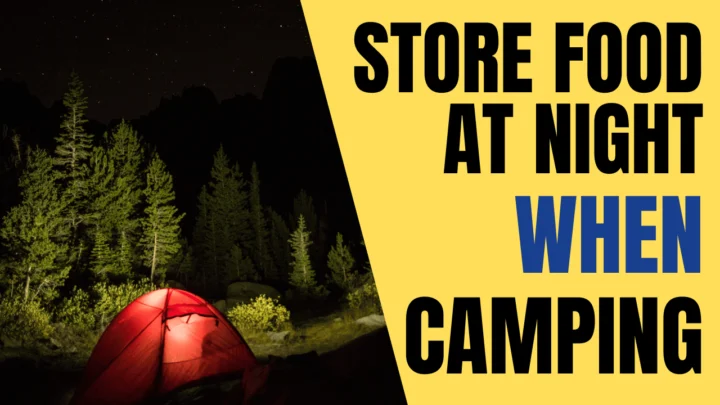
Protecting Food from Pests and Wildlife
To safeguard your food from pests and wildlife, take adequate measures to store it securely.
Store food in animal-proof containers
To prevent animals and critters from accessing your food supply, store it in animal-proof containers. These containers are specially designed with secure lids or locking mechanisms to keep out unwanted visitors. They are typically made of durable materials that are resistant to animals’ attempts to break into them.
Hang food from a tree away from the tent
Another effective way to protect your food from wildlife is to hang it from a tree away from your tent. Use a sturdy rope or bear-resistant food bag to suspend the food supply at least 10-15 feet above the ground and 4-5 feet away from the tree trunk. This method makes it difficult for animals to access your food and minimizes the risk of attracting them to your camping area.
Use bear-resistant canisters in bear-populated areas
If you are camping in bear-populated areas, it is imperative to use bear-resistant canisters for your food storage. These specially designed containers are made of robust materials that bears cannot easily break into. Using bear-resistant canisters not only protects your food but also ensures the safety of both humans and wildlife.
Securing the Food Storage Area
Creating a secure food storage area in your tent is essential to prevent any accidents or unwanted visitors.
Seal any openings in the tent
Before storing your food, inspect your tent for any openings, holes, or gaps and seal them properly. This step will prevent insects, rodents, or birds from accessing your food supply inside the tent. Use tape, mesh screens, or other appropriate materials to seal any potential entry points.
Keep the storage area clean and free of crumbs
Maintaining cleanliness in your food storage area is vital to prevent pests from being attracted to the area. Regularly clean and sweep the storage area to remove any food crumbs or spills that may entice insects or rodents.
Hang a tarp to create a barrier between food and the ground
To further protect your food from ground-dwelling pests, consider hanging a tarp beneath your food storage area. This additional barrier creates an extra layer of protection and prevents pests from accessing your food supply from underneath the tent.
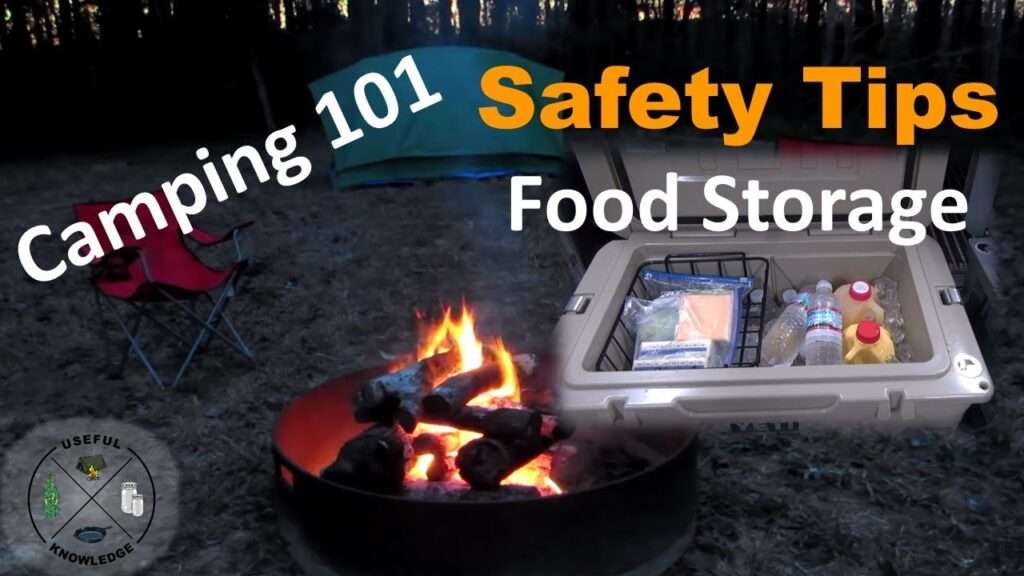
Monitoring and Rotating Food Supplies
To prevent food waste and ensure freshness, regularly monitor and rotate your food supplies.
Regularly check the condition and expiration dates of stored food
Periodically inspect your stored food for any signs of spoilage, such as a foul smell, unusual texture, or appearance. Additionally, check the expiration dates of packaged food items and discard any that are past their prime. Regular monitoring will help you maintain the quality and safety of your food supply.
Rotate the food supplies to ensure freshness
To prevent any food from being left unused and going to waste, practice food rotation. When adding new supplies to your storage, place them behind the existing stock. This way, you will use the older items first, ensuring that nothing goes stale or expires.
Keep an inventory list for better management
Maintaining an inventory list of your stored food will help you keep track of what you have and what needs to be replenished. Note down the contents and quantity of each container, as well as the date of purchase or storage. This organized approach will prevent any surprises and make meal planning easier during your camping trip.
Considering Alternative Food Preservation Methods
Besides traditional storage methods, there are alternative food preservation techniques that can extend the shelf life of perishable items.
Dehydrate food to reduce moisture content
Dehydrating food is an effective way to remove moisture and inhibit the growth of bacteria and mold. Dehydrated food is lightweight, takes up less space, and can last for long periods without refrigeration. Invest in a food dehydrator or use the sun-drying method to dehydrate fruits, vegetables, and certain meats before storing them in airtight containers.
Vacuum seal food to extend its shelf life
Vacuum sealing is another preservation method that can significantly extend the shelf life of food. By removing the air from the packaging, vacuum sealed food reduces the risk of oxidation and preserves the freshness and flavors of the stored items. Use a vacuum sealer machine and specially designed vacuum seal bags to seal your food before storing it in your tent.
Canning and smoking as additional preservation techniques
Canning and smoking are popular preservation techniques that have been used for centuries. Canning involves sealing food in jars or cans and subjecting them to high temperatures to kill bacteria and other microorganisms. Smoking involves exposing food to smoke and heat, inhibiting bacterial growth and adding unique flavors. Both methods are effective in preserving the freshness and nutritional value of food.
Planning Meals and Portions
When camping, planning meals and portions in advance can help minimize excess food storage and waste.
Create a meal plan to minimize excess food storage
Before embarking on your camping trip, plan your meals to ensure you pack only the necessary food items. Consider the number of people in your group, the duration of your camping trip, and the types of meals you wish to prepare. This proactive approach will help you pack precisely what you need and minimize excess food storage.
Divide food into individual portions for easy consumption
To streamline meal preparation and consumption, divide your food supplies into individual portions. Pre-portioning reduces the risk of cross-contamination and ensures that each person has an appropriate serving size. Consider using resealable bags or food containers for easy storage and grab-and-go convenience.
Consider lightweight and compact food options for camping
When selecting food items for camping, opt for lightweight and compact options. Foods that require minimal packaging, such as dried fruits, nuts, and energy bars, are excellent choices. Additionally, consider dehydrated or freeze-dried meals, which are lightweight and require only minimal preparation.
Dealing with Emergency Situations
It is crucial to be prepared for unexpected emergency situations when camping. Having a contingency plan for food storage during emergencies is essential.
Have an emergency food supply kit
In case of emergencies such as storms, floods, or unexpected prolongation of your camping trip, having an emergency food supply kit is essential. This kit should include non-perishable food items, such as canned goods, energy bars, and dried food, that can sustain you during unforeseen circumstances.
Know how to identify and handle food spoilage
Being able to identify food spoilage is crucial in preventing foodborne illnesses. Educate yourself and your camping companions about the signs of food spoilage, such as mold, foul smells, or slimy textures. If you suspect any of your stored food is spoiled, discard it immediately to avoid any potential health risks.
Be prepared with alternative cooking methods
During emergencies, it is essential to have alternative cooking methods available. Consider packing a portable camping stove, a compact grill, or other cooking equipment that can be used in various weather conditions. These tools will ensure that you can safely cook and prepare your food, even if your original cooking plans are disrupted.
Ensuring Proper Waste Disposal
Proper waste disposal is not only a matter of cleanliness but also a responsibility towards the environment. Follow these guidelines to minimize your impact on nature.
Dispose of food waste in designated areas or containers
When camping, always dispose of your food waste in designated areas or containers provided by the campground. Never leave food waste exposed, as it can attract wildlife and disrupt the local ecosystem. Be sure to follow any specific waste disposal guidelines set forth by the campground.
Properly seal and pack out any non-biodegradable waste
Any non-biodegradable waste, such as plastic packaging, aluminum foil, or disposable cutlery, should be properly sealed and packed out. Ensure that you have designated waste bags or bins specifically for non-biodegradable waste. Leaving non-biodegradable waste behind not only damages the environment but also poses a threat to wildlife.
Follow Leave No Trace principles for responsible camping
When it comes to waste disposal, it is essential to adhere to Leave No Trace principles. These principles advocate for responsible camping and leaving the natural environment as you found it. Minimize your impact on nature by packing out what you pack in, leaving no trace of your presence, and respecting the pristine beauty of your camping surroundings.
Conclusion
Following these tips will ensure the safe and effective storage of food in a tent during your camping trips. Proper food storage is crucial for a successful and enjoyable camping experience. By considering factors such as container material, cleanliness, organization, and proper waste disposal, you can keep your food supply fresh, tasty, and free from contamination. Always prioritize food safety and be mindful of the guidelines and recommendations provided to prevent any health risks while camping. Happy camping and bon appétit!

